This classic flowing sequence of postures is at the heart of modern yoga and can be a complete practice in itself or a preparation for a longer routine.
Traditionally performed in the morning to greet the new day, it forms the backbone of most types of yoga and employs various forward and backward bending poses that flex the spinal column, giving a profound, energising stretch to the whole body.
Because it is an energetic sequence that tones every muscle group in the body, it?s great for burning calories, building strength and stamina, improving circulation and detoxifying your internal organs through enhanced oxygenation.
It has a deeply relaxing and rejuvenating effect, too.
In other words, this is a full body workout like no other, which explains its popularity.
I would recommend doing this sequence at least five times a day if weight is an issue. But even if you only do two sequences a day, you?re doing your figure a massive favor.
There are small variations in the way yogis do this sequence, but the most important thing is the synchronisation of the motion of your breath with the movement of your body. Basically, all upward movements are coupled with inhalation, and downward movements with exhalation.
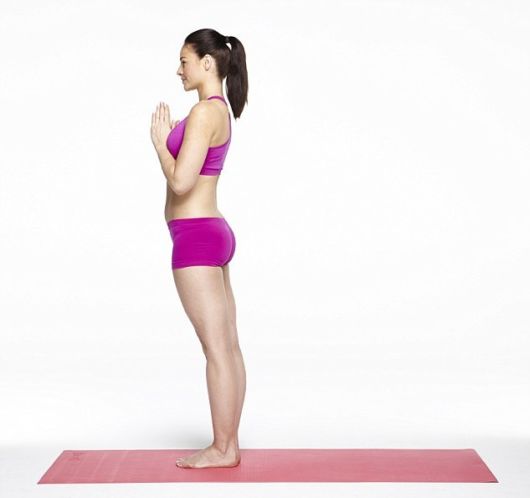
Start in Mountain pose: stand up tall, feet together or a little apart, arms at your sides. Place your palms together in a prayer position, roll your shoulders back and down and lift your chest.
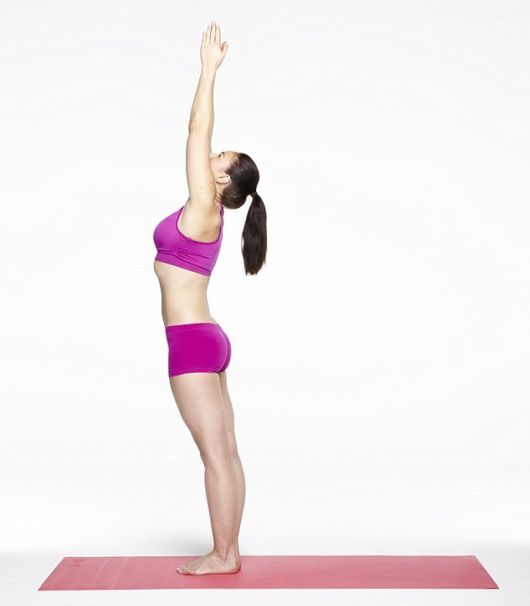
Inhale through your nose and extend your arms above and behind your head.
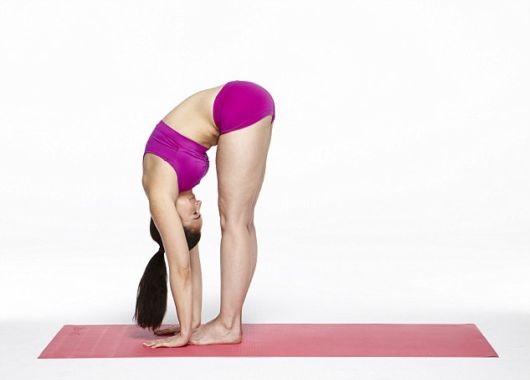
Swan dive into a standing forward bend, exhaling through your nose and placing your hands on your legs as close to your feet as you can. Bend your knees a little if your hamstrings are tight, to protect your back.
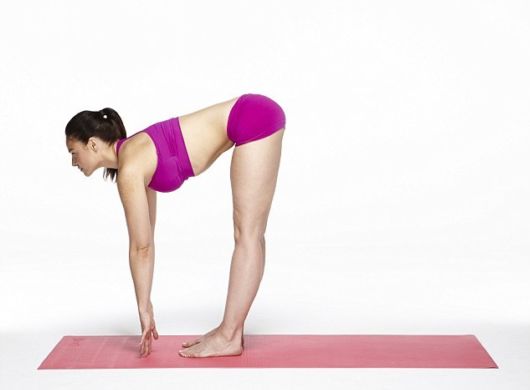
Inhale and lengthen your spine forward into a Half Standing Forward Bend, with your fingertips on the floor and gaze focused ahead.
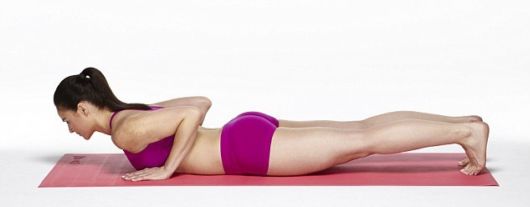
Exhale and step, or lightly hop, your feet behind you to get into a Plank pose, arms straight underneath your shoulders and legs straight behind you. Your back should be flat and your core engaged. Hold for a second, then, in a snake-like movement, lower yourself towards the floor. Then lower your chest and chin to the floor, keeping your elbows close to the sides of your ribcage, and flatten your feet to the floor.
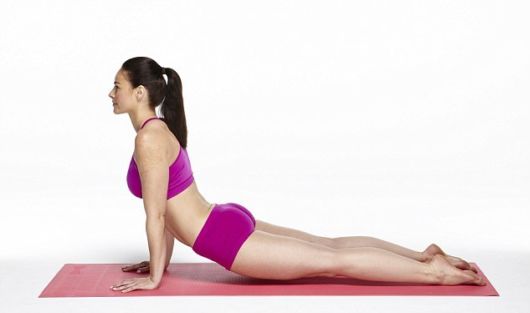
Inhale as you push down with your arms and raise your head, shoulders and upper body as far as you can without straining. This is the Cobra pose. Look upwards, roll shoulders back and down and keep elbows in. Firm up your kneecaps and thighs to prevent them lifting off the mat.

Exhale into Downward Facing Dog; walk hands forward and slightly farther apart than shoulder width, and spread fingers wide for stability. Then curl toes under and press your hips upwards so your body is in the shape of a triangle, with your bottom as the apex. Make sure your neck and shoulders are released and relaxed. If your hamstrings are tight, keep your knees slightly bent. Take five deep breaths.
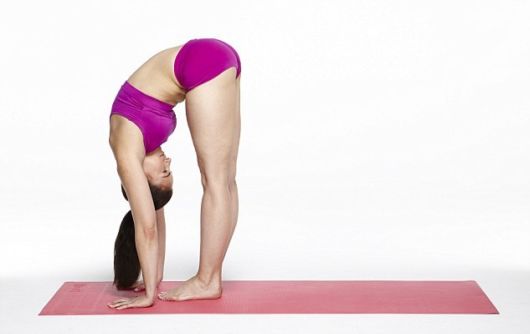
Inhale, step forward one foot and then the other between the hands, looking ahead. Then exhale into a forward bend.

Inhale and come up, arms above and behind head.
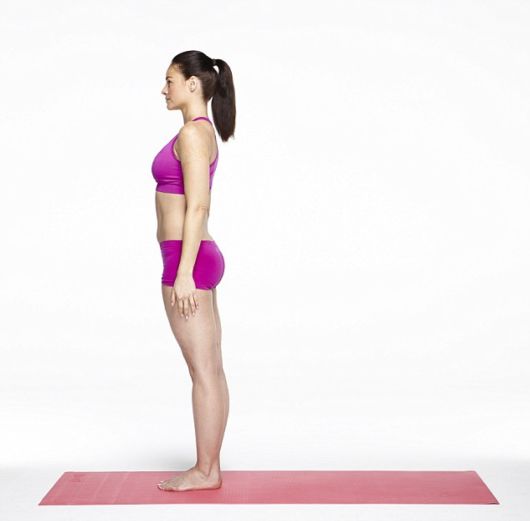
Lower arms into original standing pose.
HOW TO EAT LIKE A YOGA EXPERT
Eat nothing ? or only a light, healthy snack ? in the two to three hours before a yoga class. ?You should arrive on an empty stomach,? says Alessandra Pecorella, a yoga teacher at The Life Centre in Islington, London. ?Otherwise you?ll feel heavy and your body will be busy digesting your food, so it will be less able to support you during the poses.
This also helps to build discipline and will get you into the habit of eating when you?re hungry and not when you?re bored or emotional.
Eating in moderation is an important part of yoga practice, according to Alessandra. ?Yoga texts recommend eating until the stomach is three-quarters full,? she says. ?Always leave a space to aid digestion.?
Eat the same foods as yogis. ?The yogic, or Sattvic, diet is about eating fresh foods in season, when they are at their most nutritious,? says Alessandra. ?So it?s lots of fruits, vegetables, grains, nuts and seeds.?
These foods are full of vitamins and nutrients important for brain and body health; they also provide fibre and release energy slowly, so you?ll feel fuller for longer and be less tempted to overeat.
The yogic diet is based largely on vegetarian, alkaline foods, meaning acidic foods and drinks, such as coffee and sugary pop, are to be avoided. Fizzy drinks can also be high in calories. Instead, drink plenty of water, especially on the day of your class, to avoid cramps. If you?re sensitive to caffeine, limit your intake, as this may affect your ability to relax and get into the calm state needed for optimum practice.
A yoga class will stimulate your digestive ?fire? or appetite, says Alessandra. After class, she recommends a high-protein, low-carbohydrate meal such as a warm salad with chickpeas and nuts, or lentil soup. This will satisfy the appetite and help repair muscle without losing that post-yoga lightness.
Keep your diet varied. ?Each food has its own unique vitamin and mineral profile, so don?t just eat the same thing every day,? Alessandra says.

